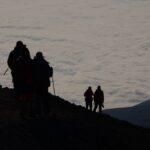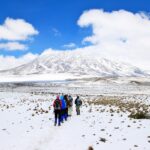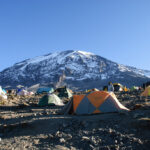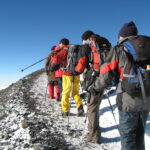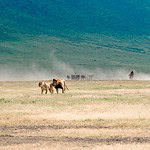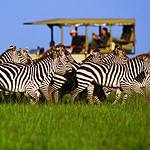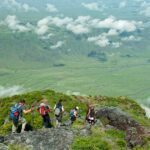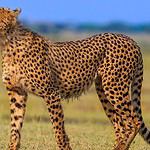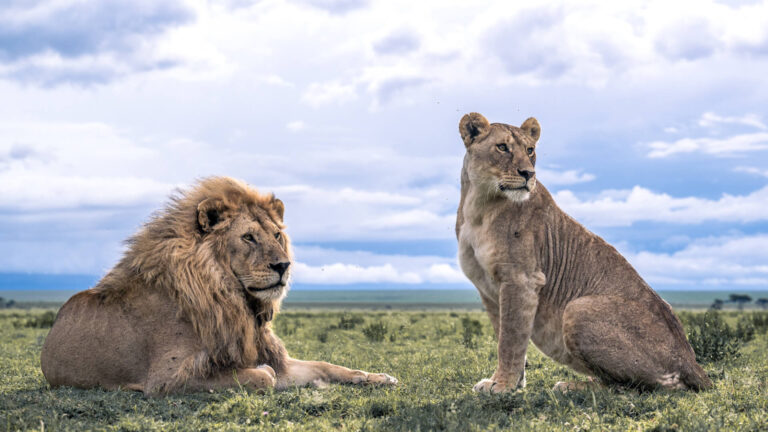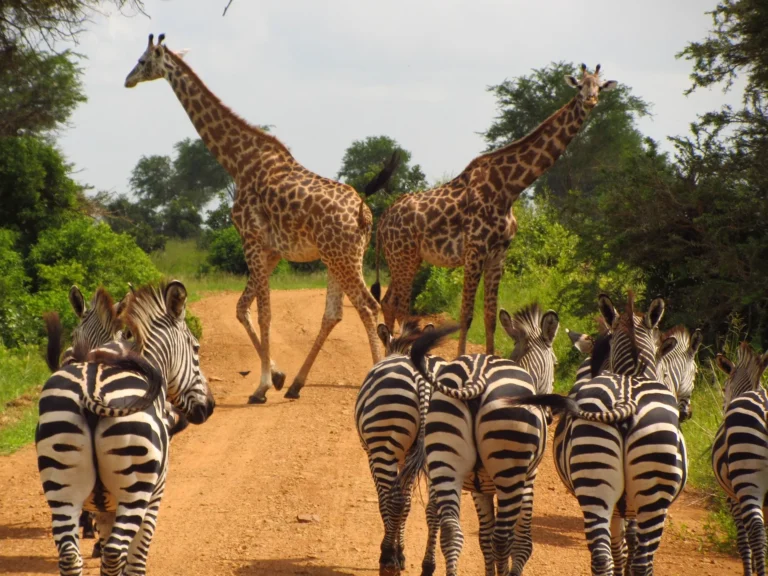Table of Contents
Top Snow-Covered Destinations in Africa You Never Knew Existed
When people think of Africa, they normally think of its huge plains, tropical coastlines, golden deserts, and wildlife safaris. But can you believe that there could also be snow on the highest mountains in Africa? The answer is, absolutely!
Though it’s famous for its tropical weather, the continent is also home to some of the world’s most breathtaking ranges covered with snow. Ranging from the gigantic Mount Kilimanjaro in Tanzania to the amazing Atlas Mountains in Morocco, each snowy mountain range has its unique way of highlighting the diversity that the continent has to offer.
This handbook will delve into the best snowed-in spots in Africa, examine the science behind snow in Africa, and expose how these incredible formations continue to entice both explorers and scientists. Whether it’s a scholar, a mountaineer, or a curious traveler, each destination will alter your perspective on Africa.
Comprehending Science: How Does Snow Exist in African Mountains?
The continent of Africa stretches on both sides of the Equator, where it is normally warm to hot. However, the rate at which the temperature diminishes when altitude increases is approximately 6.5°C (11.7°F) for every 1,000 metres that one climbs. This will mean that tropical mountain ranges can have freezing temperatures, thereby creating wonder for people when asking how there can be snow in the mountains found in Africa.
Many mountain ranges in Africa, like Mount Kilimanjaro, Mount Kenya, and the Rwenzoris, are well over 4,500 meters (14,700 ft). The low air pressure will cause it to become thin, making it easier for it to fall as snow. For travelers asking is there snow in Africa mountains, it is clear that it can form, especially when regions at the bottom are tropical.
Thus, does it snow in the mountains in Africa? It does, and for anyone wondering whetheris there snow in Africa mountains, it not only happens, it’s also pretty nice. The existence of such mountain ranges topped by snow is a manifestation that there is diversity in climates found in Africa, and it can’t be discovered somewhere else in the continent, proving again thatis there snow in Africa mountains.
1. Mount Kilimanjaro, Tanzania
In terms of questions, does Africa mountains have snow, the most common reply is Mount Kilimanjaro. Rising above at 5,895 meters (19,341 feet), it is Africa’s highest peak and one of the world’s Seven Summits. Despite being a mere 3° south of the equator, Kilimanjaro’s summit sports a year-round permanent cover of snow and ice.
Why Mount Kilimanjaro Has Snow
The Furtwängler and Rebmann glaciers of Kilimanjaro are created through compacted snow over millennia. The glaciers have existed for millenia but are quickly disappearing as a result of global warming. Nevertheless, the peak continues to be an incredibly beautiful spectacle: a radiant white crown towering over the Tanzanian plains.
Why Visit
-
Be awed by magnificent glaciers and massive snowfields.
-
Feel the excitement of ascending one of the Seven Summits of the world.
-
See the sunrise over African plains from Uhuru Peak.
-
Experience a dramatic contrast between tropical rainforest and glacial ridges.
For climbers, reaching the summit of Kilimanjaro is an opportunity that comes but once. The combination of equatorial warmth and glacial snow provides an affirmative response to the question, “is there snow on Africa mountains?”.
2. Atlas Mountains, Morocco
Another breathtaking answer to is there snow in Africa mountains is in North Africa the Atlas Mountains of Morocco. A series that runs through Morocco, Algeria, and Tunisia, the mountains divide the Sahara Desert from the Mediterranean Sea coast.
In winter (November to March), the snow-covered High Atlas Mountains provide awesome alpine views rivalling the ski resorts of Europe. Indeed, Oukaïmeden, only 75 kilometres from Marrakech, is Africa’s highest ski resort.
Why Go
-
Ski against the Sahara landscape — an experience that is virtually surreal.
-
Live in warm Berber gîtes and explore authentic villages.
-
Take low-budget skiing and snowboarding holidays.
-
Photograph dramatic snowy vistas against reddish desert horizons.
The Atlas Mountains reveal that the question “is there snow in Africa mountains?” is not reserved for the equator alone but spreads to the highlands of North Africa, where winter yields cold winds and dense snow cover.
3. Mount Kenya, Kenya
If you’re still wondering is there snow in Africa mountains, look to Mount Kenya, Africa’s second-highest mountain after Kilimanjaro. This volcanic giant towers at 5,199 meters (17,057 feet) and features glaciers and snow-capped peaks that are visible even from miles away.
Why Mount Kenya Has Snow
Although global warming has diminished the glaciers, there is still snow and ice patches on Mount Kenya, particularly on its three recognized peaks Batian, Nelion, and Point Lenana. The high altitude and equatorial position of the mountain provide a microclimate that features snow on the peak throughout the year.
Why Visit
-
Trek rainforests, bamboo forests, and alpine grasslands.
-
See elephants, buffaloes, and peculiar highland wildlife.
-
Climb Point Lenana (4,985 m) for spectacular views.
-
Live amongst local Meru and Kikuyu communities’ culture.
Mount Kenya is an experience in the physical for the adventurers and, as well, a spiritual relationship with nature. Its snow-cap peaks send a loud “yes” to the inquiry, is there snow in Africa mountains?
4. Drakensberg Mountains, South Africa & Lesotho
The Drakensberg Mountains, stretching across South Africa and Lesotho, are another location where you’ll find proof that yes, there is snow in Africa mountains. Known as “uKhahlamba” (the Barrier of Spears) in Zulu, the range features dramatic cliffs, lush valleys, and during winter layers of snow on its highest peaks.
Snow Season
Snow falls mostly between June and August, concentrated in the central and north Drakensberg. Lesotho, also referred to as the “Kingdom in the Sky,” is nearly all above 1,800 meters and is the snowiest nation in Africa.
Why Visit
-
Travel along the legendary Sani Pass, one of Africa’s best roads.
-
Visit Lesotho’s high-altitude villages and Basotho culture.
-
Photograph frozen waterfalls and ground frost.
-
Ski or snowboard at Afriski Resort, one of Africa’s only ski resorts.
The Drakensberg mountain range provides a unique combination of wildlife, cultural history, and alpine scenery all affirming the question of “is there snow in Africa mountains?” in a resounding yes.
5. Rwenzori Mountains, Uganda
They are commonly referred to as the “Mountains of the Moon.” Rwenzori Mountains are some of the most enigmatic and stunning landscapes in Africa. They run along the Uganda/Democratic Republic of Congo border, their peaks towering above 5,000 meters and remaining snow-covered all year round despite being close to the equator.
Why Rwenzori Has Snow
Steep altitude and special equatorial location allow the Rwenzoris to have glaciers at the summits such as Margherita Peak (5,109 m). The mountain is cloud-covered and experiences much precipitation, which supports its glacial regimes.
Why Visit
-
Hike through rainforest and alpine grasslands.
-
Learn about bizarre plant life such as giant lobelias and groundsels.
-
Climb to Margherita Peak, Africa’s third-highest peak.
-
Experience one of Africa’s most scenic and biologically diverse environments.
For the typical trekker, the Rwenzori adventure is like crossing a realm of fantasy in which tropical rainforest gives way to snowy ridges. This is one of the finest assurances that indeed, Africa mountains do snow.
6. Simien Mountains, Ethiopia
The Simien Mountains in northern Ethiopia are a UNESCO World Heritage Site and yet another interesting instance of Africa’s snow face. Although snow here is extremely uncommon, the peak points particularly Ras Dashen (4,550 m) do get mild snowfall in the colder months (December to February).
Why Visit
-
Catch glimpses of Gelada monkeys, Walia ibex, and Ethiopian wolves — creatures that can be found nowhere else on earth.
-
Walk through jagged summits, low valleys, and dramatic escarpments.
-
Discover Ethiopia’s vibrant culture and surrounding historic sites such as Gondar.
-
Take in the cool crisp air and panoramic vistas that stretch out over northern Africa.
The Simien Mountains provide another unexpected response to is there snow in Africa mountains? demonstrating that even in Ethiopia’s harsh highlands, winter wonder can be found.
Other Less Well-Known Snow Places in Africa
Apart from the highest peaks, a number of other African destinations receive occasional or seasonal snowfall:
-
Mount Elgon (Uganda/Kenya border): High altitude receives occasional frost and light snow.
-
Toubkal National Park (Morocco): Contains Mount Toubkal (4,167 m), North Africa’s highest mountain, which is usually snow-capped in winter.
-
Maluti Mountains (Lesotho): Gets regular snowfall and provides excellent winter photography opportunities.
-
Eastern Highlands (Zimbabwe): Frost and occasional snowfall on the highest ridges.
Each of these locations still attests to the fact that Africa’s climatic diversity is unparalleled and that there is snow in Africa mountains is not a question; it’s an eye-opener.
The Impact of Climate Change on Africa’s Snow-Capped Mountains
As fascinating as it is to learn there is snow in Africa mountains, researchers have cautioned that most of these glaciers are receding at alarming rates.
-
Mount Kilimanjaro has lost more than 80% of its ice cover since 1912.
-
Mount Kenya’s glaciers could vanish in a matter of decades.
-
The glaciers of Rwenzori are receding fast as a result of increasing temperatures and shifting rainfall patterns.
This makes it even more important to go and enjoy these natural wonders in a responsible way. To safeguard Africa’s remaining glaciers for the next generations, conservation, eco-tourism, and climate awareness are necessary.
Planning Your Trip: Tips for Visiting Africa’s Snowy Peaks
If this article has answered your query, “is there snow in Africa mountains?” and motivated you to take a trip, here are some practical considerations:
Best Time to Visit:
-
Northern Hemisphere (Atlas, Morocco): December–March.
-
Eastern Africa (Kilimanjaro, Kenya, Rwenzori): January–March and June–October.
-
Southern Africa (Drakensberg, Lesotho): June–August.
Essential Gear:
-
Warm layered clothing and waterproof outerwear.
-
Hiking boots with good tread.
-
Sunscreen and sunglasses UV rays are intense at high elevations.
-
Trekking poles and hydration packs.
Fitness Preparation:
All the snow-capped mountains in Africa are above 4,000 meters and thus good acclimatization is necessary. Progressively increasing altitude, fluid intake, and rest days avoid altitude sickness.
Guided Tours:
Select local certified guides or tour operators like Snow Africa Adventure or African Ascents. Their experience guarantees safety and benefits the local communities.
Why These Destinations Matter
If you’ve ever asked yourself, “is there snow in Africa mountains?” these destinations prove that Africa is a land of endless contrasts. Snow, desert, rainforest, and savanna all exist within the same continent.
From the sparkling glaciers of Kilimanjaro to the snow capped Atlas ranges of Morocco, each mountain has a tale of survival, beauty, and climatic magic to share. They are also a reminder that there is far more to Africa than the clichés that fill the media it’s a place where you can ski in the morning and be on safari by the afternoon.
For visitors in search of the offbeat, a trip to snow covered Africa is all about experiencing two sides of the continent: its alpine cold and tropical heat. It’s where adventure and relaxation converge, and science and spectacle meet.
So, does it snow in African mountains? Yes. And not only do Africa’s snow-capped mountains count among the world’s most spectacular.
Whether you’re standing atop Mount Kilimanjaro, skiing in Oukaïmeden, hiking through the Rwenzori, or exploring Ethiopia’s highlands, you’re witnessing one of nature’s greatest contrasts: snow under the African sun.
So pack your boots, grab your camera, and prepare to experience a side of Africa few ever imagine — a continent where snow and savanna meet in perfect harmony.

